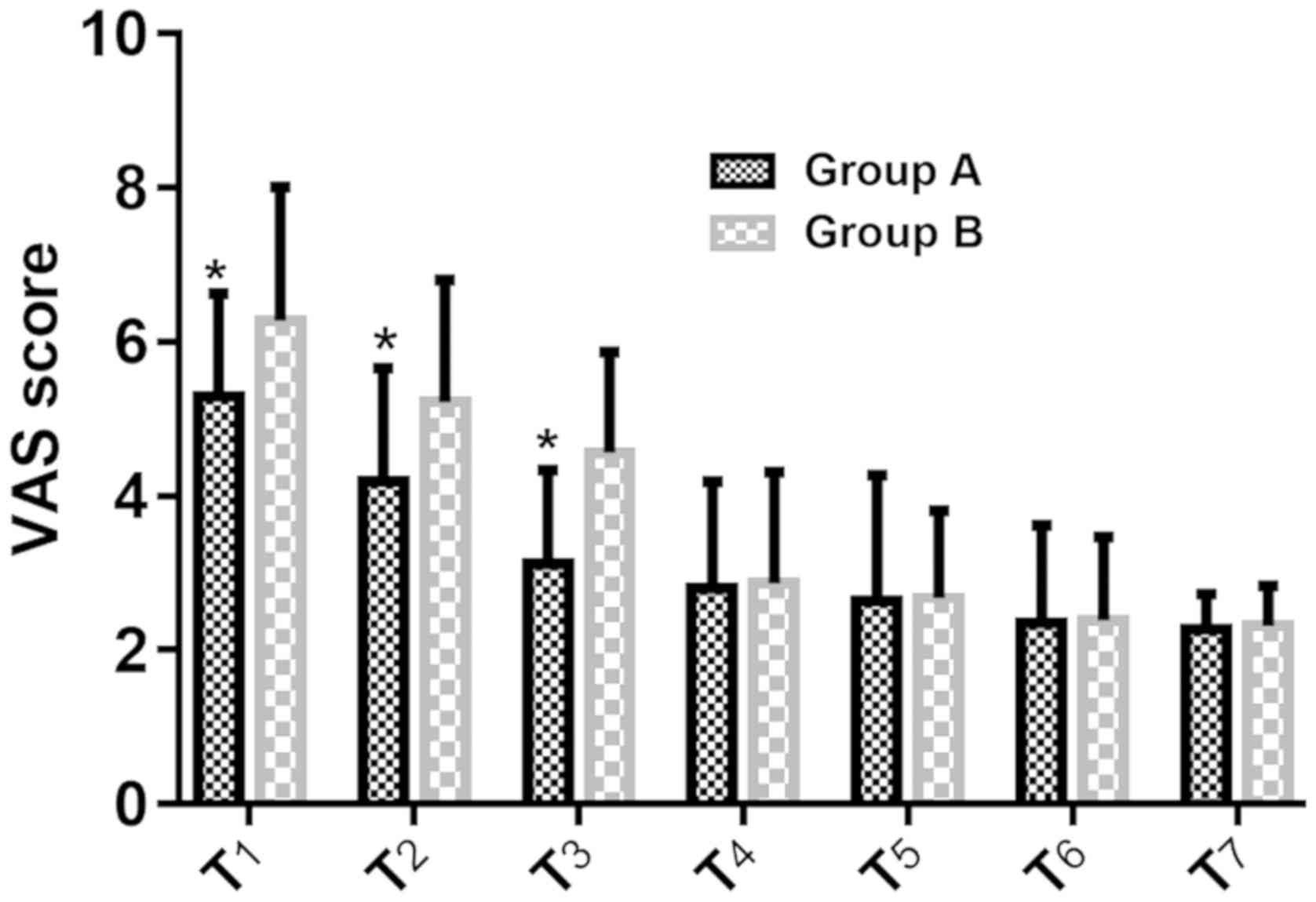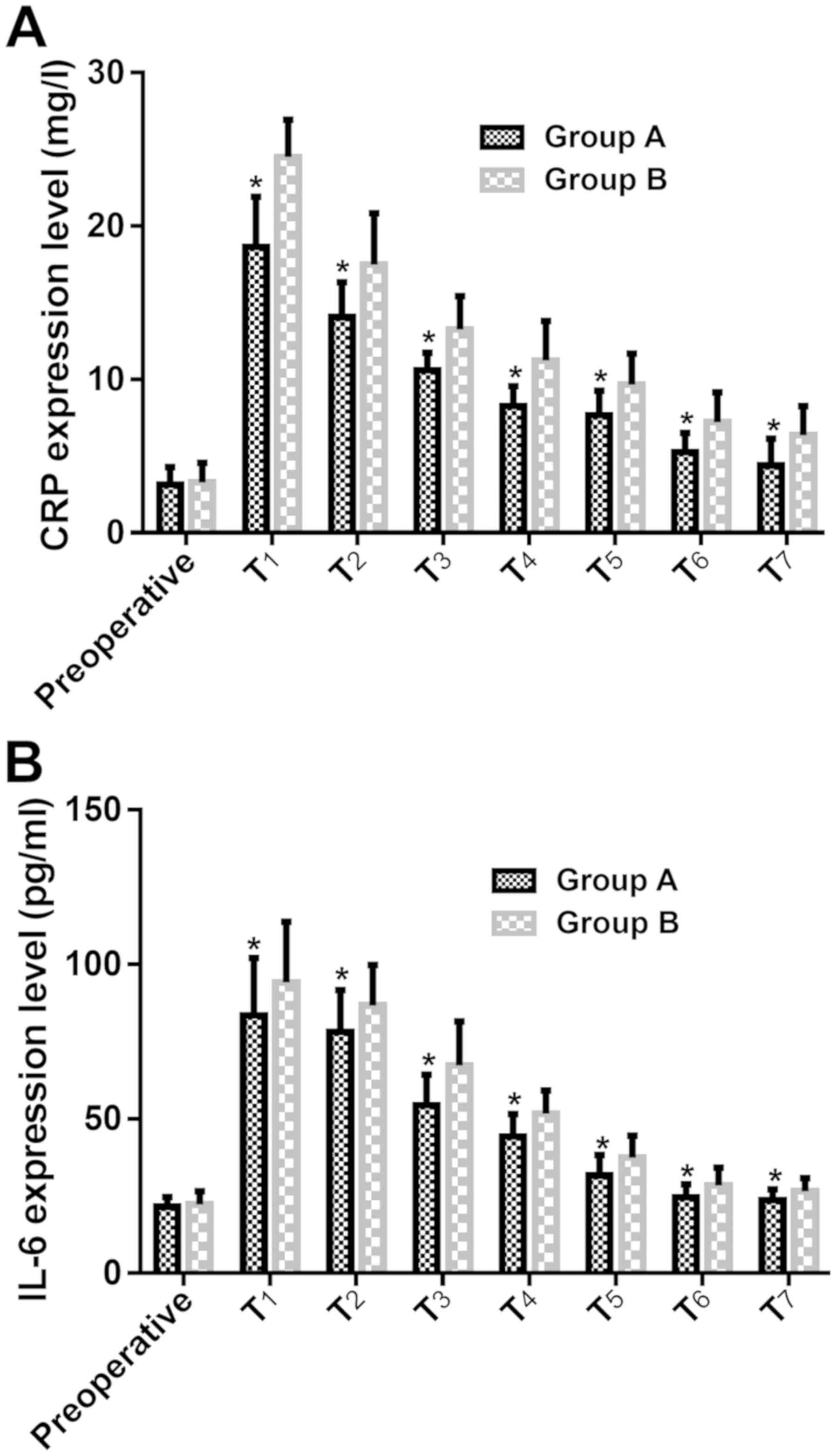|
1
|
Chen W, Zheng R, Zeng H and Zhang S:
Epidemiology of lung cancer in China. Thorac Cancer. 6:209–215.
2015. View Article : Google Scholar : PubMed/NCBI
|
|
2
|
Bhaumik S, Ahmad F and Das BR: Molecular
binary classification of NSCLC: miR-375 is a potential biomarker to
differentiate SQCC from ADCC in Indian NSCLC patients. Appl Cancer
Res. 37:282017. View Article : Google Scholar
|
|
3
|
Higuchi M, Yaginuma H, Yonechi A, Kanno R,
Ohishi A, Suzuki H and Gotoh M: Long-term outcomes after
video-assisted thoracic surgery (VATS) lobectomy versus lobectomy
via open thoracotomy for clinical stage IA non-small cell lung
cancer. J Cardiothorac Surg. 9:882014. View Article : Google Scholar : PubMed/NCBI
|
|
4
|
Paul S, Sedrakyan A, Chiu YL, Nasar A,
Port JL, Lee PC, Stiles BM and Altorki NK: Outcomes after lobectomy
using thoracoscopy vs thoracotomy: A comparative effectiveness
analysis utilizing the Nationwide Inpatient Sample database. Eur J
Cardiothorac Surg. 43:813–817. 2013. View Article : Google Scholar : PubMed/NCBI
|
|
5
|
Yang HX, Woo KM, Sima CS, Bains MS,
Adusumilli PS, Huang J, Finley DJ, Rizk NP, Rusch VW, Jones DR, et
al: Long-term survival based on the surgical approach to lobectomy
for clinical stage I nonsmall cell lung cancer: Comparison of
robotic, video-assisted thoracic surgery, and thoracotomy
lobectomy. Ann Surg. 265:431–437. 2017. View Article : Google Scholar : PubMed/NCBI
|
|
6
|
Ng CSH, Gonzalez-Rivas D, D'Amico TA and
Rocco G: Uniportal VATS - a new era in lung cancer surgery. J
Thorac Dis. 7:1489–1491. 2015.PubMed/NCBI
|
|
7
|
Gonzalez-Rivas D, de la Torre M, Fernandez
R and Mosquera VX: Single-port video-assisted thoracoscopic left
upper lobectomy. Interact Cardiovasc Thorac Surg. 13:539–541. 2011.
View Article : Google Scholar : PubMed/NCBI
|
|
8
|
Anile M, Diso D, De Giacomo T, Rendina EA
and Venuta F: Uniportal thoracoscopic lobectomy. Ann Thorac Surg.
96:7452013. View Article : Google Scholar : PubMed/NCBI
|
|
9
|
Abouarab AA, Rahouma M, Kamel M, Ghaly G
and Mohamed A: Single versus multi-incisional video-assisted
thoracic surgery: A systematic review and meta-analysis. J
Laparoendosc Adv Surg Tech A. 28:174–185. 2018. View Article : Google Scholar : PubMed/NCBI
|
|
10
|
Reck M, Popat S, Reinmuth N, De Ruysscher
D, Kerr KM and Peters S; ESMO Guidelines Working Group, :
Metastatic non-small-cell lung cancer (NSCLC): ESMO Clinical
Practice Guidelines for diagnosis, treatment and follow-up. Ann
Oncol. 25 (Suppl 3):iii27–iii39. 2014. View Article : Google Scholar : PubMed/NCBI
|
|
11
|
Hanna NH, Dahlberg SE, Kolesar JM,
Aggarwal C, Hirsch FR, Ramalingam SS and Schiller JH: Three-arm,
randomized, phase 2 study of carboplatin and paclitaxel in
combination with cetuximab, cixutumumab, or both for advanced
non-small cell lung cancer (NSCLC) patients who will not receive
bevacizumab-based therapy: An Eastern Cooperative Oncology Group
(ECOG) study (E4508). Cancer. 121:2253–2261. 2015. View Article : Google Scholar : PubMed/NCBI
|
|
12
|
Sato J, Ohtori S, Orita S, Yamauchi K,
Eguchi Y, Ochiai N, Kuniyoshi K, Aoki Y, Nakamura J, Miyagi M, et
al: Radiographic evaluation of indirect decompression of mini-open
anterior retroperitoneal lumbar interbody fusion: Oblique lateral
interbody fusion for degenerated lumbar spondylolisthesis. Eur
Spine J. 26:671–678. 2017. View Article : Google Scholar : PubMed/NCBI
|
|
13
|
Sapan HB, Paturusi I, Jusuf I, Patellongi
I, Massi MN, Pusponegoro AD, Arief SK, Labeda I, Islam AA, Rendy L,
et al: Pattern of cytokine (IL-6 and IL-10) level as inflammation
and anti-inflammation mediator of multiple organ dysfunction
syndrome (MODS) in polytrauma. Int J Burns Trauma. 6:37–43.
2016.PubMed/NCBI
|
|
14
|
Ferrell B, Sun V, Hurria A, Cristea M, Raz
DJ, Kim JY, Reckamp K, Williams AC, Borneman T, Uman G, et al:
Interdisciplinary palliative care for patients with lung cancer. J
Pain Symptom Manag. 50:758–767. 2015. View Article : Google Scholar
|
|
15
|
Bendixen M, Jørgensen OD, Kronborg C,
Andersen C and Licht PB: Postoperative pain and quality of life
after lobectomy via video-assisted thoracoscopic surgery or
anterolateral thoracotomy for early stage lung cancer: A randomised
controlled trial. Lancet Oncol. 17:836–844. 2016. View Article : Google Scholar : PubMed/NCBI
|
|
16
|
Hao Z, Cai Y, Fu S, Zhang N and Fu X:
Comparison study of post-operative pain and short-term quality of
life between uniportal and three portal video-assisted thoracic
surgery for radical lung cancer resection. Zhongguo Fei Ai Za Zhi.
19:122–128. 2016.(In Chinese). PubMed/NCBI
|
|
17
|
Hirai K, Takeuchi S and Usuda J:
Single-incision thoracoscopic surgery and conventional
video-assisted thoracoscopic surgery: a retrospective comparative
study of perioperative clinical outcomes. Eur J Cardiothorac Surg.
49 (Suppl 1):i37–i41. 2016.PubMed/NCBI
|
|
18
|
Wang BY, Liu CY, Hsu PK, Shih CS and Liu
CC: Single-incision versus multiple-incision thoracoscopic
lobectomy and segmentectomy: A propensity-matched analysis. Ann
Surg. 261:793–799. 2015. View Article : Google Scholar : PubMed/NCBI
|
|
19
|
Shen Y, Wang H, Feng M, Xi Y, Tan L and
Wang Q: Single-versus multiple-port thoracoscopic lobectomy for
lung cancer: a propensity-matched study. Eur J Cardiothorac Surg.
49 (Suppl 1):i48–i53. 2016.PubMed/NCBI
|
|
20
|
Zhu Y, Liang M, Wu W, Zheng J, Zheng W,
Guo Z, Zheng B, Xu G and Chen C: Preliminary results of single-port
versus triple-port complete thoracoscopic lobectomy for non-small
cell lung cancer. Ann Transl Med. 3:922015.PubMed/NCBI
|
|
21
|
Wang W, Yin W, Shao W, Jiang G, Wang Q,
Liu L, Liu D, Wang Z, Zhu Z, Chen H, et al: Comparative study of
systematic thoracoscopic lymphadenectomy and conventional
thoracotomy in resectable non-small cell lung cancer. J Thorac Dis.
6:45–51. 2014.PubMed/NCBI
|
|
22
|
Finley R, Mayo J, Donagh C, Leo J, Grant
K, Lam S and English J: P1. 16–34 The impact of pathology, staging
and operative resection on survival and CT evidence of recurrence
of early NSCLC. J Thorac Oncol. 13:S640–S641. 2018. View Article : Google Scholar
|
|
23
|
Chang JM, Kam KH, Yen YT, Huang WL, Chen
W, Tseng YL, Wu MH, Lai WW and Gonzalez-Rivas D: From biportal to
uniportal video-assisted thoracoscopic anatomical lung resection: A
single-institute experience. Medicine (Baltimore). 95:e50972016.
View Article : Google Scholar : PubMed/NCBI
|
|
24
|
Leung KL, Lai PBS, Ho RLK, Meng WC, Yiu
RY, Lee JF and Lau WY: Systemic cytokine response after
laparoscopic-assisted resection of rectosigmoid carcinoma: A
prospective randomized trial. Ann Surg. 231:506–511. 2000.
View Article : Google Scholar : PubMed/NCBI
|
|
25
|
Fretland AA, Sokolov A, Postriganova N,
Kazaryan AM, Pischke SE, Nilsson PH, Rognes IN, Bjornbeth BA,
Fagerland MW, Mollnes TE, et al: Inflammatory response after
laparoscopic versus open resection of colorectal liver metastases:
Data from the Oslo-CoMet Trial. Medicine (Baltimore). 94:e17862015.
View Article : Google Scholar : PubMed/NCBI
|
|
26
|
Dai F, Meng S, Mei L, Guan C and Ma Z:
Single-port video-assisted thoracic surgery in the treatment of
non-small cell lung cancer: A propensity-matched comparative
analysis. J Thorac Dis. 8:2872–2878. 2016. View Article : Google Scholar : PubMed/NCBI
|
|
27
|
Mier JM, Chavarin A, Izquierdo-Vidal C,
Fibla JJ and Molins L: A prospective study comparing three-port
video-assisted thoracoscopy with the single-incision laparoscopic
surgery (SILS) port and instruments for the video thoracoscopic
approach: A pilot study. Surg Endosc. 27:2557–2560. 2013.
View Article : Google Scholar : PubMed/NCBI
|
|
28
|
Quinten C, Martinelli F, Coens C,
Sprangers MA, Ringash J, Gotay C, Bjordal K, Greimel E, Reeve BB,
Maringwa J, et al Patient Reported Outcomes and Behavioral Evidence
(PROBE) the European Organization for Research and Treatment of
Cancer (EORTC) Clinical Groups, : A global analysis of multitrial
data investigating quality of life and symptoms as prognostic
factors for survival in different tumor sites. Cancer. 120:302–311.
2014. View Article : Google Scholar : PubMed/NCBI
|
|
29
|
Möller A and Sartipy U: Predictors of
postoperative quality of life after surgery for lung cancer. J
Thorac Oncol. 7:406–411. 2012. View Article : Google Scholar : PubMed/NCBI
|
















